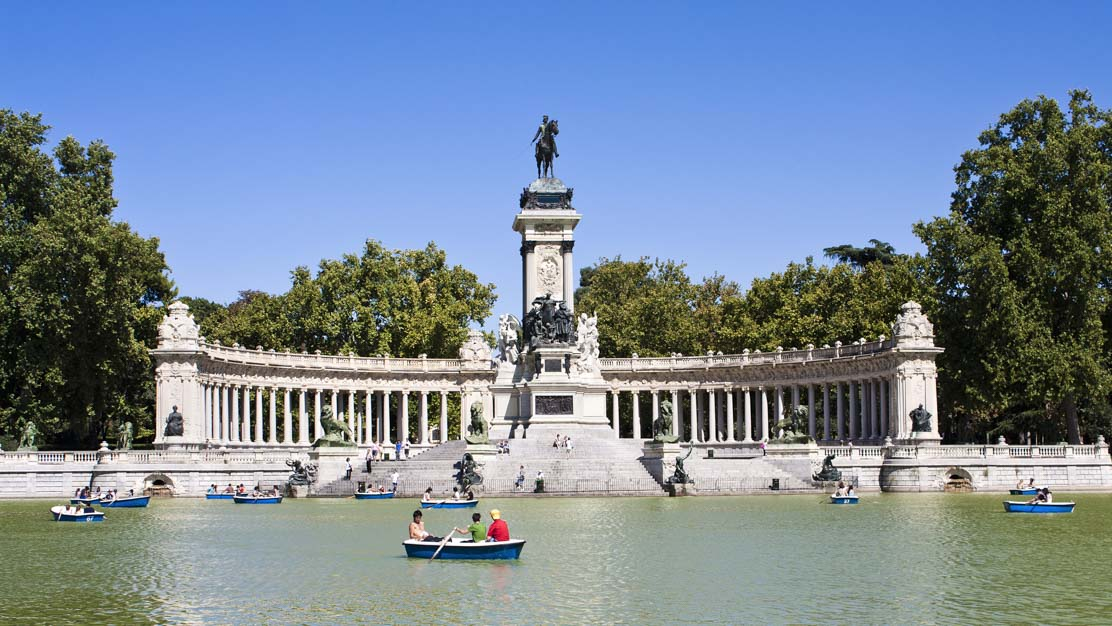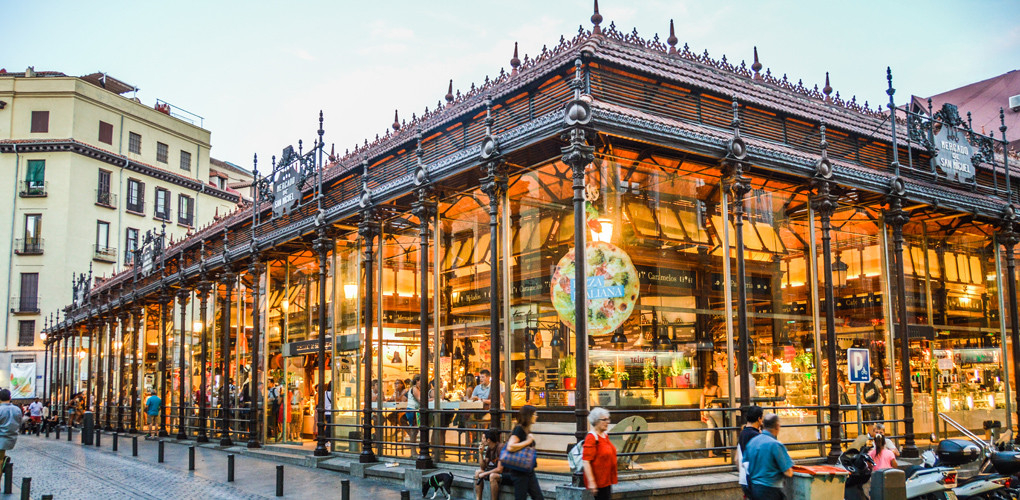Top Destinations in Madrid: Discover the Soul of Spain’s Capital
There is something magnetic about Madrid — a city that pulses with energy, history, and warmth. From the grandeur of royal palaces to the buzz of tapas bars, from the timeless art of Velázquez to the rhythm of flamenco, Madrid is more than Spain’s capital — it’s an experience that moves between elegance and spontaneity. In this Madrid Attractions Guide, we’ll explore the must-see sights, hidden corners, and cultural highlights that make Madrid one of Europe’s most captivating destinations.
Quick Overview
- Country: Spain
- Region: Community of Madrid
- Language: Spanish (English widely spoken in tourist areas)
- Currency: Euro (€)
- Population: Approximately 3.3 million
- Best Time to Visit: March to June & September to October
As Spain’s beating heart, Madrid is where tradition meets creativity. Days start with coffee at a sunlit plaza, continue through museums and parks, and end with long dinners, laughter, and late-night dancing. Whether it’s your first visit or your tenth, Madrid’s mix of royal grandeur and street-level authenticity keeps travelers coming back for more.
Royal Palace of Madrid (Palacio Real)

Few European capitals can boast a royal palace as majestic as Madrid’s. The Royal Palace of Madrid (Palacio Real) stands on the site of the old Alcázar fortress and showcases more than 3,000 rooms filled with chandeliers, frescoes, and priceless art. Although the royal family no longer resides here, it remains the official residence of the Spanish monarch.
Inside, highlights include the Throne Room, the Royal Armory, and the Hall of Mirrors. Outside, stroll through the peaceful Sabatini Gardens and enjoy stunning sunset views from Plaza de Oriente. The palace is open year-round, but early mornings are best to avoid crowds.
Prado Museum (Museo del Prado)
One of the world’s most prestigious art museums, the Prado Museum holds a collection that spans centuries of European creativity. Masterpieces by Velázquez, Goya, Rubens, and Titian line its elegant halls. The museum’s crown jewel, Las Meninas, remains one of the most studied and mysterious works in Western art.
Allow at least two hours for your visit, and don’t miss the nearby Thyssen-Bornemisza Museum and Reina Sofía Museum to complete Madrid’s “Golden Triangle of Art.” Entry to the Prado is free during the last two hours of the day, making it accessible for all travelers.
Retiro Park (Parque del Buen Retiro)

If you need a break from the city’s lively rhythm, head to Retiro Park. Once a royal retreat, this vast green oasis now belongs to everyone. Locals jog along tree-lined paths, musicians fill the air with soft melodies, and families row small boats across the shimmering lake. Don’t miss the Crystal Palace (Palacio de Cristal) — a beautiful 19th-century glass pavilion that hosts rotating art exhibitions.
Retiro is more than just a park; it’s Madrid’s social hub, where leisure meets culture. Bring a picnic, rent a bike, or simply sit under the shade of a chestnut tree and watch Madrid slow down.
Puerta del Sol and Plaza Mayor

Every road in Spain begins here. Puerta del Sol marks the official “Kilometer Zero,” the symbolic center of the country. It’s also home to the famous clock tower where thousands gather each New Year’s Eve to eat 12 grapes as midnight strikes — a Spanish tradition for good luck.
A short walk leads you to Plaza Mayor, an elegant square surrounded by terracotta-colored buildings and graceful arches. Once a venue for royal ceremonies and bullfights, it’s now filled with cafés and restaurants. Try a traditional bocadillo de calamares (fried squid sandwich) at one of the old taverns tucked beneath its arcades.
Gran Vía — The Heartbeat of Modern Madrid
Madrid’s answer to Broadway, Gran Vía bursts with energy 24/7. Built in the early 20th century, this grand boulevard showcases the city’s most iconic architecture — from the art deco Metropolis Building to the Telefónica Tower. Today, it’s home to designer stores, cinemas, and theaters.
Visit at night when neon lights reflect on polished façades and street musicians perform beneath the glow. For breathtaking city views, head to the Riu Plaza España Rooftop or the Gourmet Experience terrace at El Corte Inglés.
Temple of Debod

One of Madrid’s most unexpected attractions, the Temple of Debod is an authentic Egyptian temple dating back to the 2nd century BC. It was gifted to Spain by Egypt in 1968 as a gesture of gratitude for helping save historic monuments during the construction of the Aswan Dam.
Today, it sits gracefully in Parque del Oeste, overlooking the city. Visit at sunset, when the temple’s reflection glows golden in the surrounding pool — it’s one of Madrid’s most romantic views.
Reina Sofía Museum (Museo Nacional Centro de Arte Reina Sofía)
For modern and contemporary art lovers, the Reina Sofía Museum is a must. Its star piece, Picasso’s Guernica, captures the horror of war and stands as a timeless symbol of peace. The museum also features works by Dalí, Miró, and Juan Gris. The building itself — a former hospital — has been transformed into a light-filled cultural space with a striking glass elevator tower.
Mercado de San Miguel

Step into Mercado de San Miguel and let your senses lead the way. This historic iron-and-glass market near Plaza Mayor is a paradise for foodies. Sample Iberian ham, fresh oysters, artisanal cheeses, or sip local wines while people-watching. It’s the perfect stop for a casual lunch or evening tapas crawl.
Prices are higher than average, but the quality and atmosphere are unbeatable. Try small tapas portions to taste as much as possible.
Malasaña & Chueca Neighborhoods
Two neighborhoods that define modern Madrid. Malasaña is bohemian, full of vintage shops, creative energy, and small indie bars. It’s where Madrid’s “Movida” counterculture was born in the 1980s. Chueca, on the other hand, is lively, inclusive, and stylish — the epicenter of Madrid’s LGBTQ+ community and nightlife. Both areas are perfect for discovering the city’s trendiest restaurants and rooftop terraces.
Day Trips from Madrid
Madrid’s central location makes it easy to explore other Spanish gems. Hop on a high-speed AVE train and you can reach:
- Toledo: A medieval city of three cultures — Christian, Muslim, and Jewish — just one hour away.
- Segovia: Famous for its Roman aqueduct and fairy-tale castle.
- Ávila: Known for its perfectly preserved medieval walls and cathedral.
Travel Tips for Visiting Madrid
- Madrid is best explored on foot — wear comfortable shoes.
- Plan museum visits during late hours when entry is often free.
- Restaurants serve dinner late (after 8:30 PM), and many shops close for siesta (2–5 PM).
- Buy a multi-day transport card for unlimited metro and bus travel.
- Carry a reusable water bottle — Madrid’s tap water is clean and safe.
When to Visit Madrid
The best months are spring (March–June) and autumn (September–October). The weather is pleasant, and outdoor terraces are full of life. July and August can be very hot (35°C+), but cultural events continue through the evenings. Winter (December–February) is mild, making it ideal for museum visits and cozy café afternoons.
Conclusion
Madrid is a city of moments — a sunset at Debod, a late-night laugh in a tapas bar, an art piece that leaves you speechless. Beyond its attractions, it’s Madrid’s atmosphere that captivates. Come for the landmarks, stay for the life that unfolds between them.
